|
Alexander Molony, Ever Anderson, Joshua Pickering, and Jacobi Jupe in "Peter Pan & Wendy" (2023) After bursting onto the scene with such films as “Pete’s Dragon,” “A Ghost Story,” and visual marvel “The Green Knight,” David Lowery became an exciting name to anticipate a new project from. When news broke of a live-action reimagining of Peter Pan with Lowery at the helm, ideas swirled around how the director would bring a coming-of-age classic to the screen. There seemed to be a fitting prelude to the task. Much of Lowery’s recent work explored wistful fables and lost souls. His stories often explored the imaginative, indescribable planes of consciousness where fantastical new worlds still felt grounded. As such, there is something about Lowery’s “Peter Pan & Wendy” that feels independent from a lot of disheartening Disney live-action remakes. But as he injects realism into Neverland, he loses the pixie dust that makes this adventure so magical.
The J.M. Barrie play, originally published in 1904, has sparked several re-imaginings from the 1953 Disney animated “Peter Pan” and the 1991 Steven Spielberg adventure “Hook,” to P.J. Hogan’s dreamy 2003 adaptation “Peter Pan.” Spielberg and Hogan had their distinctive visions that felt fully realized and committed. The former asks the question, what if Peter Pan grew up? The latter leans fully into the whimsy of innocence and first love. Lowery’s version exists somewhere in between realism and idealism. Based on Barrie’s play and the 1953 animation, “Peter Pan & Wendy” somehow feels both engaged in the material and disinterested in it altogether. The familiar skeleton of Peter Pan plays out in the story. The film follows young Wendy Darling (Ever Anderson) and her little brothers (Joshua Pickering and Jacobi Jupe), living in 20th century London with their mother (Molly Parker) and father (Alan Tudyk). On the eve of Wendy’s move to boarding school and about to leave her childhood home, she gets a visit from Peter Pan (Alexander Molony), the free-spirited boy who refuses to grow up. He arrives looking for his shadow, and alongside his fairy best friend Tinker Bell (Yara Shahidi), brings the Darling siblings to the ethereal world of Neverland. Once there, the group embark on an adventure and thwart the evil pirate, Captain Hook (Jude Law). Lowery re-teams with his “The Green Knight” co-writer Toby Halbrooks to pen the screenplay for “Peter Pan & Wendy,” which doesn’t necessarily live up to its title of giving Wendy interesting exploration. She is admirably given an outgoing role in the story, and often takes the lead on action-based sequences as well as more emotionally charged moments. But the film tends to keep her at arm’s length when it comes to who she is beyond the circumstances, and what sparks her intense interest in what being a grown up would be like. Complex ideas are thrown into the narrative without really coming to fruition. One such idea is the relationship between Peter and Captain Hook being given more history. This leads to the revelation of Captain Hook as a more tragic figure than expected, which paints Peter in a negative light. But the screenplay doesn’t engage in the history of their dynamics, and as a result it sits on the surface. Though the relationship does give Jude Law a bit more material to play with. The actor relishes in Hook’s backstory beneath the moustache-twirling persona. His lively performance is far and away the most engaging; he flies with an energy that the rest of the film can’t quite reach. “Peter Pan & Wendy” is filled with glimpses of greatness. By taking on a more realistic approach to Peter Pan, Lowery shakes the glitter off of its iconography. He makes stunning use of Newfoundland landscapes, which add a natural quality to the film’s grounded and ethereal version of Neverland. The visual language and soundscape are a strong extension of Lowery’s vision. He presents the opportunity to dive deep into the wistfulness of this story, and the pangs of eternal childhood. Unfortunately, the screenplay is only halfway there, intrigued by fresh ideas but not fully equipped to explore them well. The film holds onto the familiar structure of the Pan story, and takes away the parts that make the possibilities of this world feel so enchanting. Lowery’s full vision feels broken into pieces between the two approaches. “Peter Pan & Wendy” is now available on Disney+.
0 Comments
A still from "Bystanders" (2023) Friendship reunions run the gamut of emotion. Some relationships are able to pick up where they left off as if no time has passed. Others have been shaken by the very common occurrence of simply drifting apart, without rhyme or reason. Approaching a reunion is a cocktail of expectation and uncertainty, as you are getting to know someone all over again, for better or worse. The Canadian film “Bystanders,” written and directed by Koumbie, explores what happens when six childhood friends ruminate on the disturbing past experiences of someone in their circle. The group, who gather for their annual weekend getaway at a remote cottage, are forced to confront the knowledge that one of them is guilty of sexual assault. Each friend takes a stance, ranging from defense and bewilderment, to accountability and punishment. “Bystanders” tackles the aftermath of sexual assault from the perspectives of those who personally know the abuser. Will the circle of friends maintain silence and complicity? Or will the abuser be confronted? Adhering to its title, “Bystanders” is an uncomfortable story of how people navigate confessional wrongdoing and how their decisions reflect society at large.
The story begins with an air of innocence. In watching the group of friends arrive at the getaway home, Koumbie refrains from giving an early indication of the difficult conversations to come. She initially brings a more light hearted tone to the film, engaging in a secret romantic relationship between two characters Ayda (Marlee Sansom) and Zeke (Cavell Holland). The two of them toy with the idea of telling the rest of the group that they are seeing each other. The viewer also sees jovial moments among the friend group overall. Though as the film progresses, the tone becomes more dramatic with the arrival of Justin (Taylor Olson), Adya’s first love and Zeke’s roommate. From the chemistry that Sansom and Olson share, to the energy they bring to their performances, it’s clear that their characters have a history. Ayda appears to have moved on, but Justin is adamant about continuing to pursue her attention. The film establishes from early on that he crosses boundaries and lacks accountability. The tensions between characters, and the way they all observe one another in a shared space, eventually build to a shattering dinner table conversation. It is revealed that Justin is guilty of sexually assaulting his girlfriend when they were university students. When he describes what happened, he fails to grasp the wrongdoing of his behavior. Rather than turn into a character study about the perpetrator, the film branches outward to his surroundings. How each of them reacts to this information is extremely telling of their character. One of the friends, Sophia (Katelyn McCulloch), immediately calls him out and stresses to the group that Justin should be jailed for what he did. Justin’s brother, Kyle (Peter Sarty), carries the frustration that a family member committed something horrible, struggling to fathom that his own brother would do such a thing. The film’s bystanders constantly navigate not only how to approach Justin, but whether their own reactions align with their core beliefs and values. Co-written by Koumbie and Taylor Olson, the film explores literally and figuratively how shared spaces are utilized. Whether sharing a physical space, or an intimate experience. Justin shatters the safe space that held his friend group together; trust is broken upon them finding out someone they thought was a decent human being had committed violence. The film also explores how a man’s actions puts a woman’s experiences into perspective. In light of the news, Ayda begins to reexamine her own relationship history with Justin, and specifically the times she felt that her own safety was violated. It is an unsettling moment in the film that speaks to how women are so often gaslit, and their experiences are not taken seriously. The biggest missed opportunity in “Bystanders” is not centering Ayda’s character throughout. The majority of her scenes tend to revolve around Justin’s presence, rather than elaborate on her point of view. This is a character with conflicting emotions, trying to reconcile the person she once had feelings for with the person he reveals himself to be on the weekend getaway. While there is a strong imbalance of perspective, “Bystanders” makes for a promising feature debut by Koumbie. In exploring the bystanders of the story, she takes an intriguing and introspective approach to heavy subject matter. Emma Ferreira, Allan Hawco, Liane Balaban, and Ryan Allen in "Midnight at the Paradise" (2023) The Paradise Theatre on the corner of Bloor Street and Westmoreland Avenue has been a part of Toronto’s neighborhood for decades. With its 1930s art deco style and welcoming atmosphere, the Paradise brings audiences together. It’s a place where people not only watch films, but create memories, and make connections with people that last forever, no matter how much time passes. For the characters in “Midnight at the Paradise,” a gem of a picture directed by Vanessa Matsui, the theatre is a checkpoint. It represents a moment of reflection, and a reminder of the past. It is through the significance of this landmark that the film gently finds its way. From passion and grief, to the fickleness of time, resonant themes are explored with care and the power to evoke strong emotion. With terrific subtext and authentic performances, “Midnight at the Paradise” shines as a meditative slice-of-life story about personal journeys.
“Midnight at the Paradise” follows two former lovers — Iris (Liane Balaban) and Alex (Allan Hawco) — years since they first met. Living in Toronto, Iris is unhappily married to Geoff (Ryan Allen), raising their daughter Alice (Lauren Brady), and caring for her terminally ill father Max (Kenneth Welsh). Meanwhile in Montreal, Alex feels disconnected from his girlfriend Anthea (Emma Ferreira), and is eager to make a trip back to where he found his everlasting early love. Upon being introduced to Iris and Alex separately, there is an intriguing unspoken connection between these two characters. Though physically cities apart, they feel joined at the hip. You pick up on their history without question, a testament to good acting and complimentary editing that flows incredibly well. Iris and Alex have a tenderness and a shorthand that unravels slowly, leading up to when the two reconnect at the Paradise. They pick up where they left off, as if no time has passed. Often when it comes to films about lost lovers finding their way back to what they once shared, the story zones in on their personality traits and who they are as defined by each other. “Midnight at the Paradise” stands out in depicting a romantic connection from the perspective of daily life and how it informs the pursuit of revisiting past experiences. In addition to Iris and Alex, the screenplay (written by Bill Robertson) invests in the supporting characters of their lives and how the protagonists’ love impacts them in small ways. Instead of being defined by each other, the film incorporates the bits of life happening around them to create portraits of people that feel real. The characters are brought together by the Paradise — Iris has plans to save the theatre with a screening of Jean-Luc Godard’s “Breathless” (1960), a prime example of French New Wave cinema. Both Iris and her father Max (a former film critic whose motto is to let a movie be a movie), hold “Breathless” in high regard. The Paradise screening is a tribute to Max, who is suffering from pancreatic cancer. The film depicts a complex father-daughter relationship that thrives in subtext. The emotions left unsaid between them speaks volumes as they share several scenes centered on just a look, or a parting word. From the way Iris looks at her father, there is a heartache and a longing behind her eyes, that gives you a sense of how difficult it is to see him unwell. As someone who shares in a similar experience, the pain brings about deep reflections of the future and time itself. You remind yourself of what matters at your core, and feel a greater desire to follow what makes your heart sing. Iris reconnecting with Alex, even on a subconscious level before the two physically meet again, is a resonating manifestation of one of her deep desires. Alex takes her back to young love, endless possibility, and the experience of watching “Breathless” together for the first time. As well, her love and appreciation for her dad’s work and what films meant to him. “Midnight at the Paradise” excels at showing how a true love story continues to build — further away from reality — in its struggle to survive the everyday. “Midnight at the Paradise” marks Vanessa Matsui’s feature directorial debut and an exciting new chapter in her career. One that has been long awaited considering her wonderful dark comedy web series “Ghost BFF,” which premiered its first season in 2018 and followed with a second in 2020. The series tells the story of two best friends (one alive, one a ghost) navigating their past and present life choices. “Ghost BFF” shines a light on mental health in a truly accessible and authentic way. Matsui brings a similar authenticity to the topic of romantic relationships in “Midnight at the Paradise.” The film balances Iris and Alex’s story while exploring sparks flying between Geoff and Anthea, as well as the long-lasting connection between Max and his wife Charmaine (Kate Trotter). Each of these relationships are given the time to unfold naturally, and feel rooted in truthfulness. The performances are grounded and bring emotional weight to the story, especially Balaban and Hawco who convey subtext beautifully. Matsui embraces the messiness of love and the mixed emotions around what people want out of their partners. She maintains a compelling exploration of characters at different points of their relationships, and how the overlapping of their lives brings out their personal pursuits. In addition to being a great piece on complicated relationship statuses, “Midnight at the Paradise” is a sweet love letter to the power of films. From the backdrop of saving the Paradise theatre to the use of Godard’s “Breathless” as a compatibility test for the characters, there is so much love around this medium of storytelling and its power of bringing people together. Toni Collette in "Mafia Mamma" (2023) Step aside, Michael Corleone. A new mafia boss is in town. In Catherine Hardwicke’s slapstick comedy “Mafia Mamma,” mild-mannered mom Kristin (Toni Collette) unexpectedly inherits her grandfather’s mafia empire and reluctantly takes on responsibility as new leader of the Balbano family business. Guided by the family’s advisor Bianca (Monica Bellucci), Kristin defies expectations and climbs up the mafia hierarchy. This story of succession is exaggerated into one of silliness. Each scene has a lighthearted tone, and moments of attempted heartfelt emotion are brushed aside in favor of maintaining aloofness. “Mafia Mamma” aims to entertain, and succeeds goofily in doing so, but the parting note it leaves the viewer is forgettable. While Hardwicke’s direction is lively and Toni Collette gives a committed performance to make an absurd premise work, the screenplay lets everyone down in creating an emotionally engaging story. “Mafia Mamma” is a silly fish-out-of-water story that operates on surface level. When the fun and games are over, emptiness washes over.
The film establishes Kristin as a suburban mom who lives an ordinary life with her husband Paul (Tim Daish) and their son Domenick (Tommy Rodger). You see Kristin go through the motions of her day-to-day, until one day she catches her husband cheating on her. Distraught and blindsided, she finds solace in her friend Jenny (Sophia Nomvete). All the while, a life-changing phone call from Italy is about to change Kristin’s life. She is informed that her grandfather/mafia boss Don Giuseppe Balbano (Alessandro Bressanello) has died, and that she must attend his funeral in Italy. Kristin runs this through with Jenny at an exercise class; Jenny amusingly encourages her to “Eat, Pray, F**k,” a play on the 2006 Elizabeth Gilbert novel “Eat Pray Love.” Kristin decides to use this opportunity as a chance to explore Italy — meet a partner, have great wine and food, and forget her troubles back home. But she is in for a dramatic awakening. The changes brought on by Kristin’s inheritance of the mafia empire are not only tangible. In addition to a new scenery and wardrobe, the character of Kristin is going through an internal metamorphosis. When the viewer first meets her, she is lacking confidence in herself. Her marriage has fallen apart. She is not appreciated at her job; her bosses reek of toxic masculinity and sexism in the workplace. Her voice is not being heard. During her time in Italy, she becomes more confident in herself. She leads a daring and dangerous life, from accidentally killing people to severing eyeballs. Her voice becomes heard in a cutthroat business made up nearly all by men. The film struggles to really engage with who Kristin is at her core; it’s clear that she is on a path of empowerment and destiny, plus tapping into female rage, but her character development is messy. Rather than engage with promising themes, the film opts for cliches, stereotypes, and slapstick. Inconsistent as it is in terms of humor level, the slapstick element of “Mafia Mamma” is precisely what makes the film entertaining. From the absurdity of the fish-out-of-water story, and goofy supporting mafia characters, to the majority of Kristin’s actions throughout. Only a truly versatile and committed actress could take on this material and create a worthwhile experience out of it. Toni Collette has the range; in her illustrious career, she has taken on nearly every genre. Does “Mafia Mamma” rank high among her best films? No, but it serves as further example of how dedicated she is to giving her characters a sense of purpose. With her unique talent, she pulls off an equally unique feat of suspending disbelief and going along with her character from one bizarre situation to the next. Where “Mafia Mamma” falls flat can be felt watching the end credits. The film is silly fun to watch, but excruciatingly forgettable after the fact. The screenplay leans too far into slapstick to the point where it overpowers characters. Certain plot points in the story are sped through, especially in the final act where a courtroom sequence appears out of thin air. Collette is giving the energy that the film calls for, but at the expense of resonating character development that isn’t just surface level and full of cliches. The romance plot in particular between Kristin and Lorenzo (Giulio Corso), a man she randomly meets at the airport when she arrives in Italy, comes and goes. The film also criminally wastes the talent of Monica Bellucci; her commanding screen presence is incredible, but her character is given little to do and not much time to make an impact in the story. “Mafia Mamma” is surreal to watch in its incessant dedication to goofy punchlines and stereotypical storytelling. While the performances are committed enough, the characters lack the dimension to stand out beyond the circumstances they are in. The film’s emphasis on situational cringe comedy grows tiresome. But the entire cast are game, and their commitment (centrally Collette) in each and every scene pays off in creating campy entertainment. “Mafia Mamma” doesn’t hold a candle to resonant crime films, nor do the screenwriters have a good story on their hands. But ultimately this is a fun, goofy time from start to finish. “Mafia Mamma” arrives in theaters April 14. Michelle Williams in "Showing Up" (2023) As the opening credits roll on Kelly Reichardt’s latest film “Showing Up,” the director’s perceptive sensibility is on full display. A collection of sculpted pieces are given uninterrupted focus. The viewer soon discovers whose artistic hand is behind each creation. Michelle Williams plays Lizzy Carr, an antisocial sculptor artist on the verge of a career-changing exhibition. In the lead-up to her show, she navigates the quiet stresses of her family, friends, colleagues, pet cat, temporary pet pigeon, and everyday life itself. As Lizzy tries to mould a place of solitude and protect her artistic process, daily setbacks get in the way. “Showing Up” moves at a gentle pace, which is exactly the kind of minimalist approach that has come to define one of the most distinctive filmmakers of our time. From “Wendy and Lucy” and “Certain Women” to “First Cow,” Kelly Reichardt tells low-key stories about characters going about their lives, simply passing through. A clear continuation of this type of storytelling, “Showing Up” is a wonderfully perceptive piece about nurturing creativity and navigating obscurity.
Lizzy lives with her cat and prefers an unbothered life when she’s at home. She has a tranquil workspace, where she makes sculpted people who are rough around the edges. Each piece, as you see in the beginning of the film, is about to be part of an upcoming gallery exhibit. Given the obscurity of Lizzy’s work, this show is a big deal, and she wants everyone in her life to be there, however dysfunctional. Lizzy works administration at a small arts college in Portland, Oregon. Her mother Jean (Maryann Plunkett) is her boss, a detail which the film reveals in a perfectly subtle way. Jean floats in and out of the story, as do Lizzy’s ceramicist father Bill (Judd Hirsch) and mentally ill brother Sean (John Magaro). Among Lizzy’s limited social circle, there’s sweet pottery expert/co-worker Eric (André Benjamin, also known as André 3000), and pesky landlord Jo (Hong Chau) who is also an artist. The majority of these characters represent a daily setback on some level, particularly Jo repeatedly ignoring Lizzy’s requests to fix the water heater in her rental house so that she could take a shower. The interactions between Lizzy and Jo are incredibly stressful to watch, made even more so by the discreetness of both characters. Their dynamic feels truthful, especially for Lizzy’s character who is more introverted and avoids confrontation. Another highlight is Lizzy’s return home from a stressful family situation, clearly in emotional distress, only to find that Jo is throwing a party next door. The camera stays on Lizzy as she walks from her car to her front door, and it’s one of the most quietly nerve-wracking moments in the film. Rather than exaggerate for dramatic effect, “Showing Up” underplays conflict to the point where it fades into the mundanity of everyday life. Lizzy having to remind Jo to fix the shower becomes part of a routine. When a pigeon flies into Lizzy’s window and she carefully puts it back outside, Jo finds the bird down the road and hands responsibility over to Lizzy for nurturing. The pigeon becomes part of a routine. The film conveys several moments such as these, where Lizzy’s work schedule is interrupted by various people (and animals) and she shows up to face each mini challenge. It’s a slice-of-life story that unfolds the way daily life does: routinely, though not without a curveball or two, in varying degrees of extremity. No one captures the mundane like Reichardt. She has perfected the art of drawing out the significance from unassuming moments. “Showing Up” shines in its focus on mood and atmosphere over a highly eventful plot. Not much is happening in this story. The screenplay, co-written by Reichardt and Jonathan Raymond, prioritizes the bits of life happening right under your nose. It’s a patient character study just as much about Lizzy as it is about her surroundings. As is often the case in Reichardt’s body of work, characters are conveyed through a language of what’s left unsaid between them. When we first see Lizzy among a group of people, there’s an energy to the way she interacts with them, suggesting how close or distant she is to them. Explanatory dialogue is not needed. The inflections of a character speak volumes, and in this artistic world of Portland, reveal how creative impulses shape how you go about your day. Lizzy’s character is an engaging depiction of how it feels to immerse yourself in art and craft, while feeling the tug of responsibility. The role of Lizzy is right up Michelle Williams’ alley. “Showing Up” marks her fourth collaboration with Reichardt and by this stage, the two have established an incredible shorthand with each other. It’s easy to see why Williams continues to show up, they feel made for each other on an artistic level. Williams slips into the unassuming slumber of Portland without missing a beat. Her performance is a subtle showcase of her instinctive, naturalistic gifts as an actress. While her character is emotionally reserved, Williams is an open book with perceptive expressions that call on your patience to sit with her and simply observe. She makes Lizzy’s insecurity palpable on screen, to the point where you do feel quietly stressed out (and at times mildly amused) by her day-to-day life. In addition to Williams, Hong Chau is terrific and makes a case for becoming another wishful Reichardt regular. After her breakout role in 2017’s “Downsizing,” Chau has continued to show phenomenal range, from 2022’s “The Whale” and “The Menu” to the 2019 HBO stunner “Watchmen” and this year's crafty whodunit series “Poker Face.” “Showing Up” is another wonderful turn; the character of Jo is tricky to find. She’s self-centered and annoying in her neglect. She also has a deep impulse to create as much as possible, and despite previous challenges, she shows up for Lizzy’s big night. Jo and Lizzy show up for their art in different ways, and that dichotomy is resonating to reflect on. Throughout “Showing Up,” there are blissful uninterrupted vignettes of artists making things. Artists in their element, focused only on the creation at hand. Reichardt finds a sublime balance between portrayals of isolated artists like Lizzy, and the prospering art world she’s surrounded by. “Showing Up” depicts the creative process in a way that you can assign your own perspective. Once you find your creative skill, how do you nurture and protect it? How willing are you to show up for it? Is your willingness at the expense of others, who need you and count on you for something that exists outside of your creative zone? “Showing Up” may seem specific in its focus on a small slice of life, but Reichardt engages in such resonating universal themes about wrestling with self-security as an artist, and finding a place in a community full of creatives. Kathryn Hahn in "Tiny Beautiful Things" (2023) With a performance as sublime as Kathryn Hahn’s in Hulu’s “Tiny Beautiful Things,” every second of screen time is precious. Every expression and inflection carries the weight of a life lived, lessons learned and unlearned. Her raw and unfiltered performance rests at the emotional core of “Tiny Beautiful Things,” a moving and sensitive portrait of universal themes that make one feel less alone. Through the exquisite range, poignancy, and humor of Hahn’s work, the story shines with the most human brushstrokes. From strong character development and focused direction, to an impressive balance of tones and time periods, “Tiny Beautiful Things” poses the delicate question of what it means to heal and move on.
Based on Cheryl Strayed’s best-selling 2012 novel, which extends to “Advice on Love and Life from Dear Sugar,” the eight-episode miniseries centers on Clare, an accomplished writer who hasn’t accomplished it yet. The story finds her in barely holding herself together. Her marriage is floundering, and relationship with her daughter is strained. She just about holds down an administrative job at a care home, a faraway land from her early passion to become a writer. Adding salt to the wounds, Clare continues to grieve the loss of her mother, who had passed when Clare was 22 years old. So when a writer friend asks her to take over the anonymous advice column Dear Sugar, Clare asks, why her? Who is she to give advice when her life is in shambles? How did she get so far from the writer her mom believed she could be? She gradually comes to realize that self-help is born out of not knowing all the answers, and gives herself the grace period to step into columnist mode. Showrunner Liz Tigelaar lovingly brings Strayed’s novel to the screen with an acute understanding of the daily echoes of grief. It’s a state of mind that has no end, but calls on you to endure and sift through the residue. The character of Clare personifies the feeling of not having a right to beautiful things, or happy experiences, after losing a loved one. The healing process shapes a narrative around her that is easy to identify with, in large part thanks to Hahn’s openness as an actor, and the delicate generosity of the writing. “Tiny Beautiful Things” offers mostly fruitful albeit repetitive grounds for the talented ensemble of actors, mainly Hahn in the lead role. The Kathryn Hahnaissance has been long overdue. Following years of brilliant performances, from 2008’s “Step Brothers” and “Revolutionary Road,” to 2018’s “Private Life” and the Agatha Harkness phenomenon in 2021’s “WandaVision,” Hahn’s layered work in “Tiny Beautiful Things” is the gift that keeps on giving. In playing a shell of a person, Clare is faced with many triggers of the past that remind her of a former self. Hahn navigates that space beautifully, and gives a lot of emotional resonance to the mother-daughter aspect of the series. Hahn brings grounded humor to the role; in an amusing one-night-stand scene, Clare reacts to hopping onto an unexpected waterbed and questions if she’s trapped in a Steely Dan song. The beauty of her performance is that she is everything all at once, and that level of realism also builds a foundation where her chemistry shines with the other actors. Tanzyn Crawford gives a strong performance as Clare’s daughter Rae; you can feel the open wounds of their relationship dynamic and some of the internal conflict that Rae herself faces. Quentin Plair stands out as Clare’s husband Danny, who she had met when she was in her 20s. Plair’s performance in the present-day is also complimented by Stevonte Hart, who plays the young Danny. The flashback scenes add welcome context to the highs and lows of their relationship, and what keeps their relationship still somewhat intact. Among the supporting cast, Sarah Pidgeon shines as younger Clare. She adopts similar mannerisms and personality traits as Hahn’s adult version of Clare. The balance of present-day and flashback scenes pieces together an interesting character that you get a nearly full-circle understanding of. The series cuts to younger Clare around the time that her mom was diagnosed with cancer, and in the aftermath of her mom’s death. In some of the flashbacks, Merritt Wever makes an appearance as Clare’s mom, Frankie Pierce. While underused and mostly playing a one-note role, Wever is always an endearing presence, and still makes a resonant impact with limited time. A piece of advice that echoes through “Tiny Beautiful Things” is that when a gift is given, say thank you. The sentimentality of the story can be heavy-handed at times. But the combination of great direction, writing, and acting holds everything together with a nurturing reassurance that most things will be okay eventually. The series finds success in the specificity of its characters and their experiences, which makes expansive themes feel impressively grounded and tangible. Led with a soulful performance by Kathryn Hahn, “Tiny Beautiful Things” offers a gentle reminder of storytelling as a powerful tool of self-expression and healing. "Tiny Beautiful Things" premieres on Disney+ on April 7. |
Archives
June 2024
Categories |

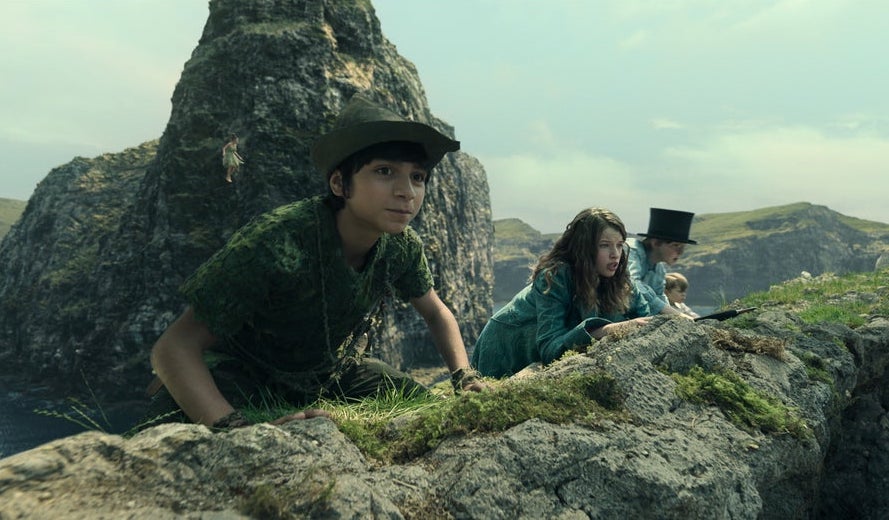
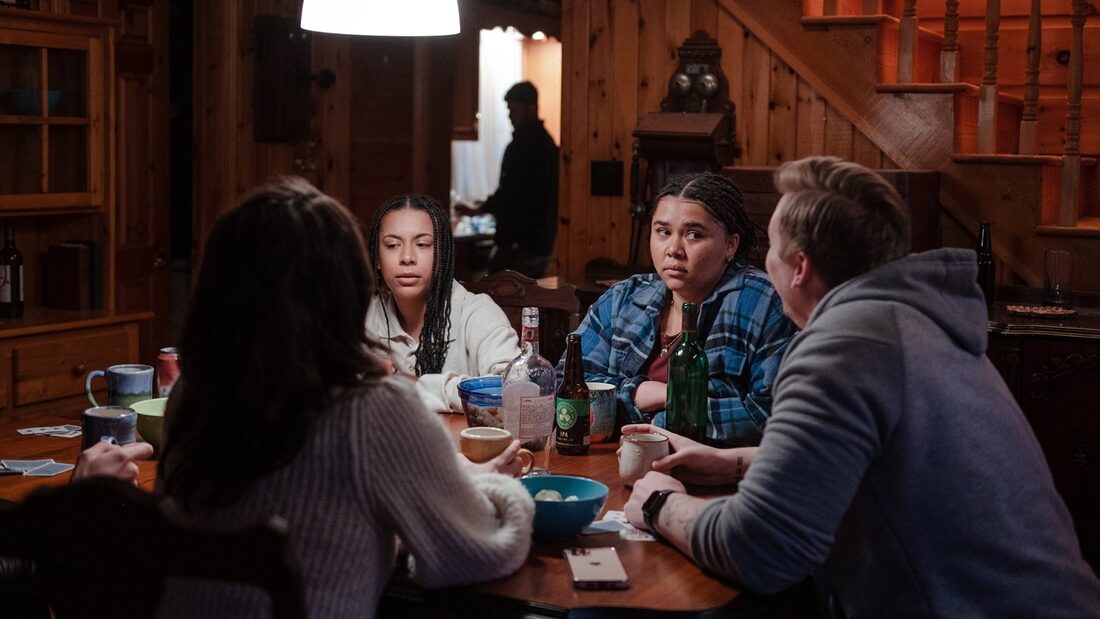
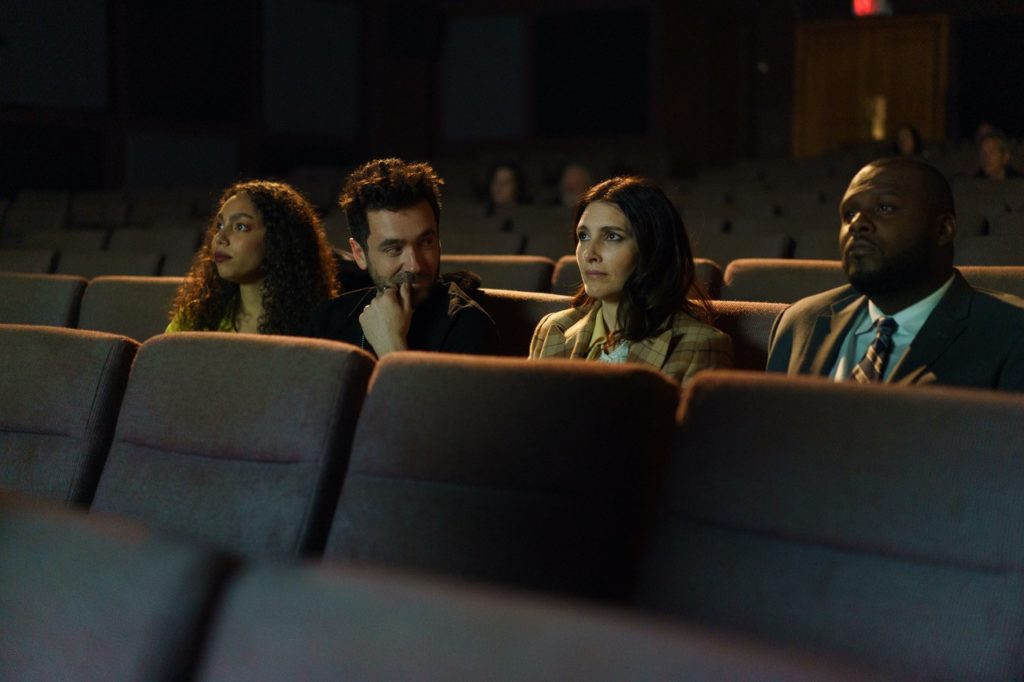
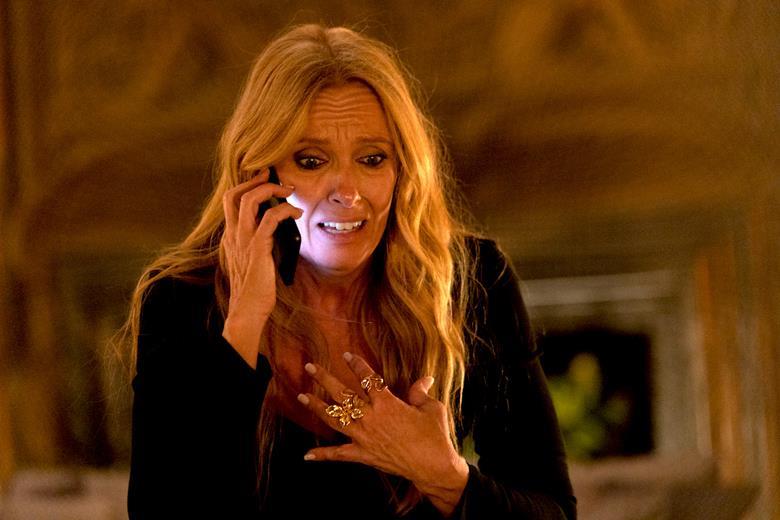
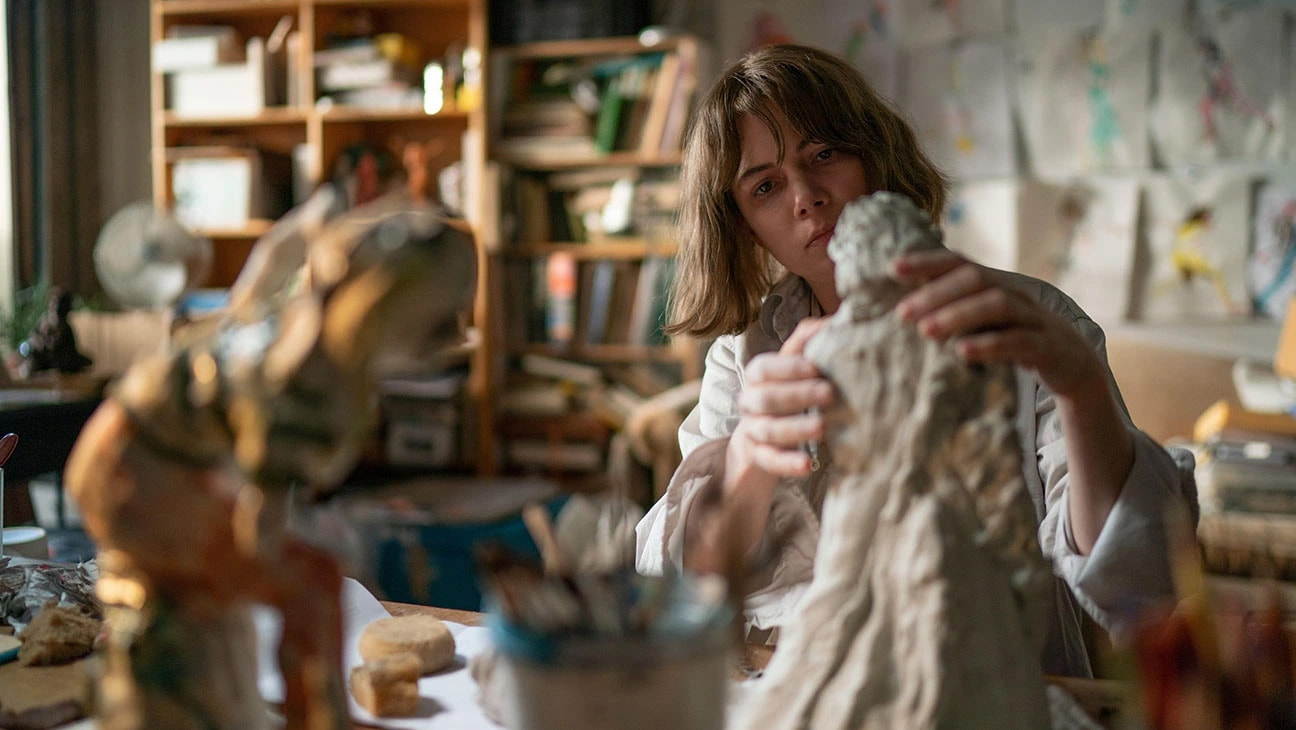
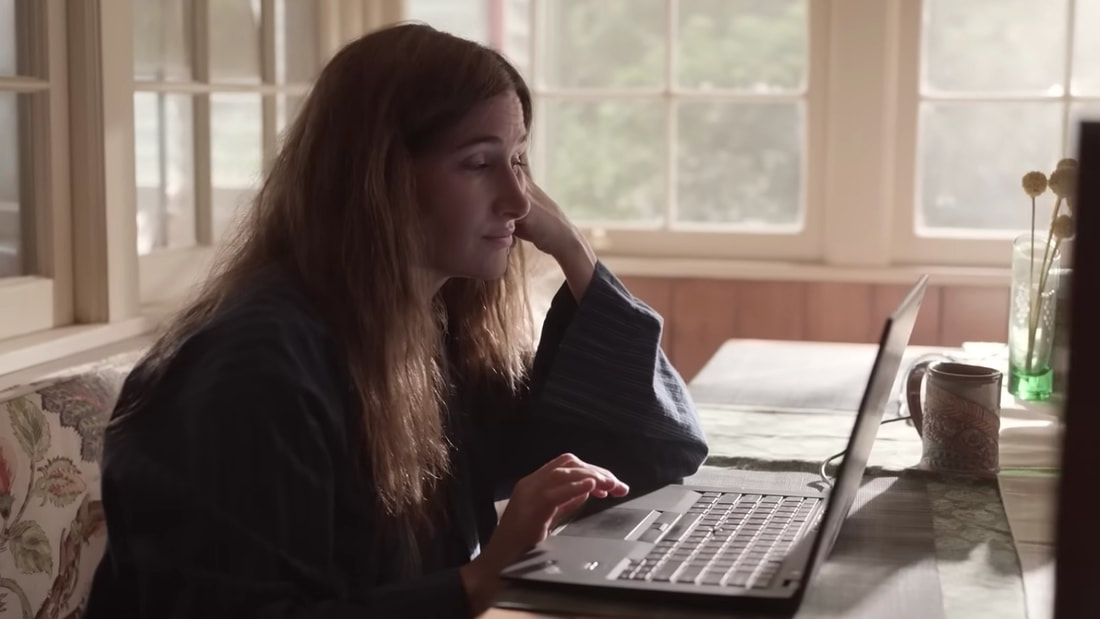
 RSS Feed
RSS Feed